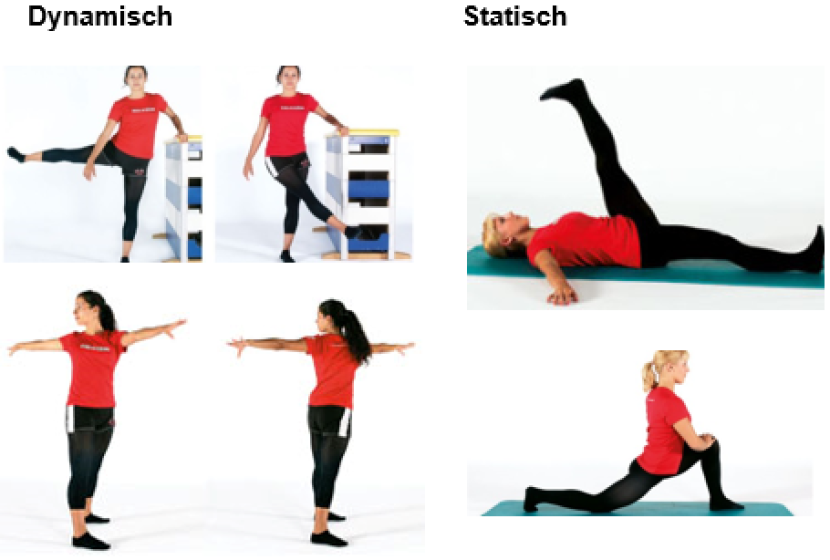Aims and effects of stretching
Stretching is supposed to improve performance, prevent injuries and muscle soreness and enable faster recovery. Unfortunately, these positive effects have not yet been proven. What research has shown is that muscles are more flexible immediately after stretching and that stretching leads to an increase in strength. Another finding was that the muscles show less readiness to contract and reflex after static stretching. Therefore, static stretching should not be performed before a 100 metre sprint, for example. Practical experience has so far shown that systematic stretching has a positive effect and should therefore be done daily.
Dynamic and static stretching
Dynamic forms must be performed in a controlled manner and the range of motion must be slowly increased to the maximum (no 0 to 100 in one second). A relaxed position is advantageous for static stretching. Whether pre-stretching, post-stretching or flexibility training, focussed execution and good body awareness are important.

Many stretching exercises can be performed both statically and dynamically with small adjustments, for example by not remaining in the stretching position but changing the position with small movements. This prevents the tension in the muscle from dropping. Low muscle tension (tone) reduces athletic performance, but promotes regeneration, which is one more reason to stretch dynamically before exercise and statically after exercise.
Stretch muscles, mobilise joints
Mobility is the ability to perform movements at will with the optimum range of motion of the joints. Warming up improves the stretchability and elasticity of the muscle and connective tissue and supplies the joints with the necessary lubricating fluid. Nevertheless, targeted gymnastics and joint mobilisation (free movement in the joint) are useful to prevent nasty surprises such as strains and damage to cartilage.
More info: